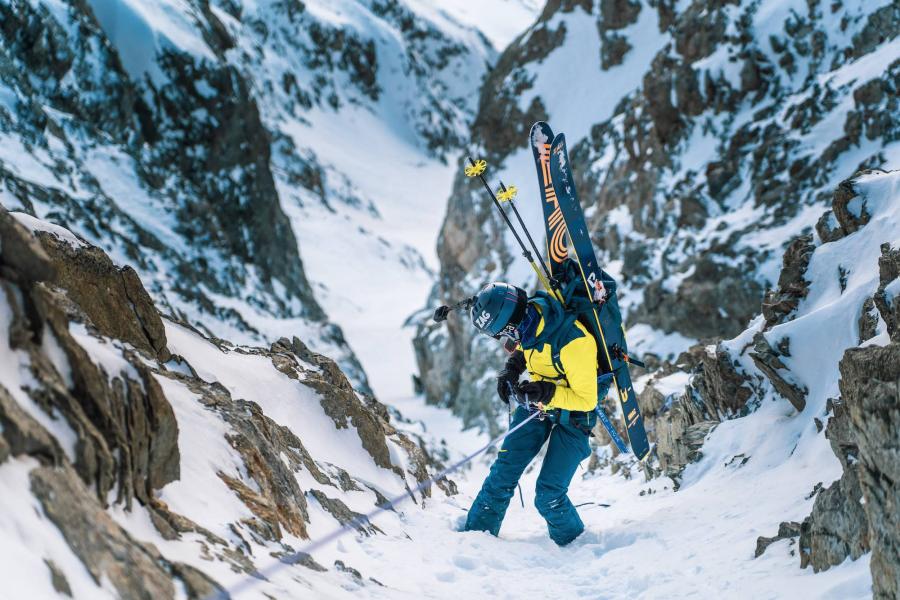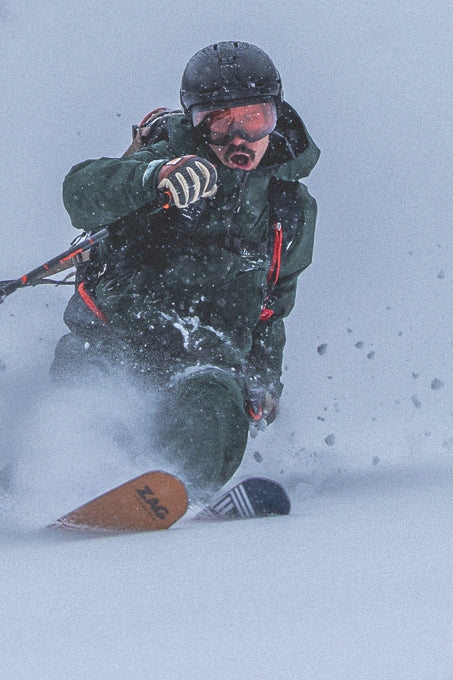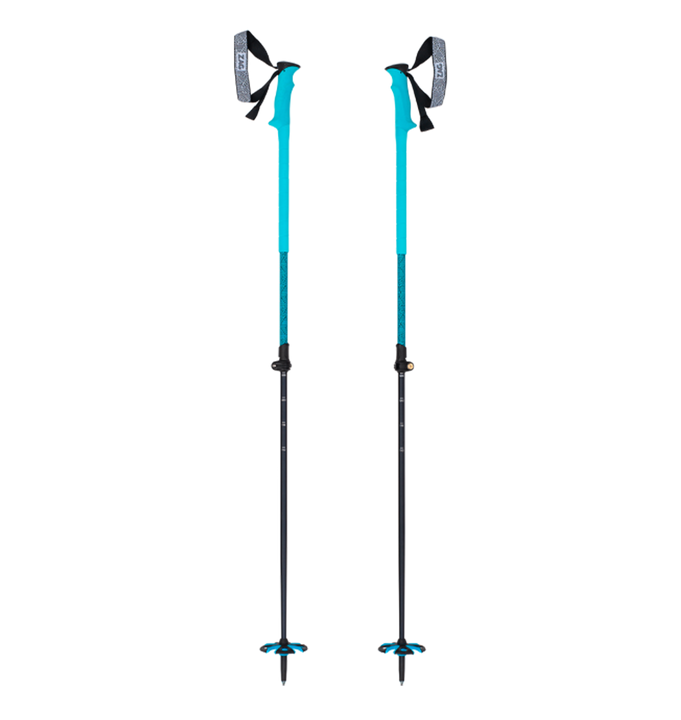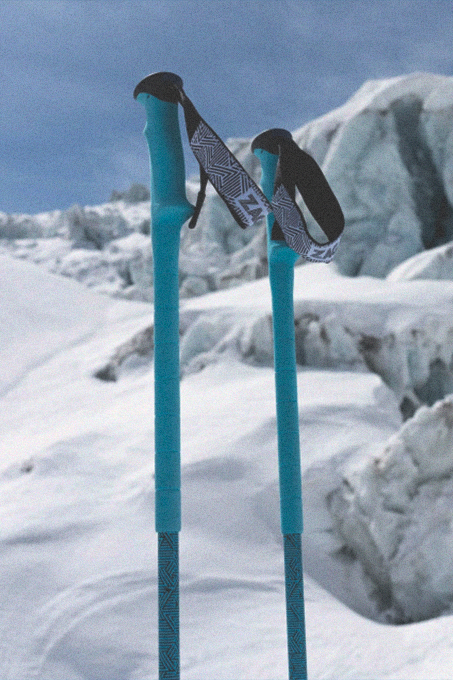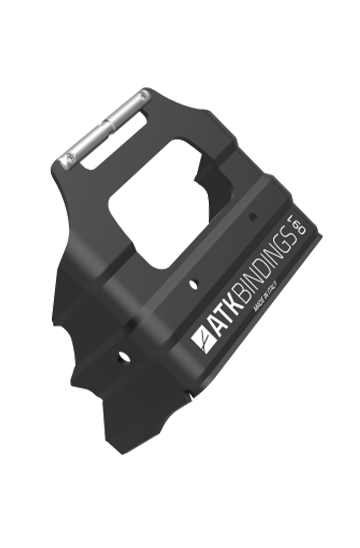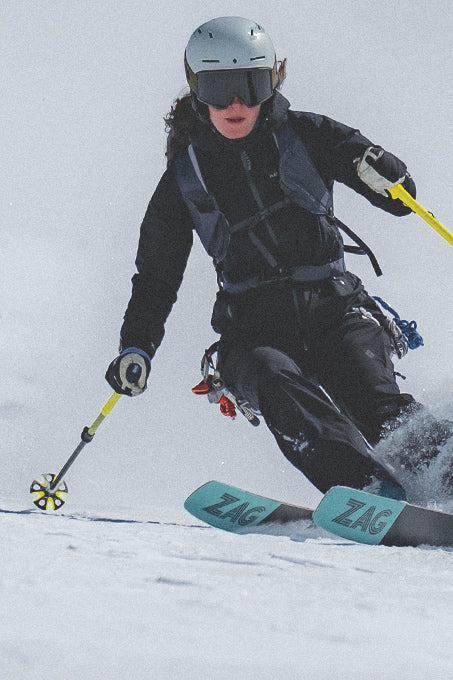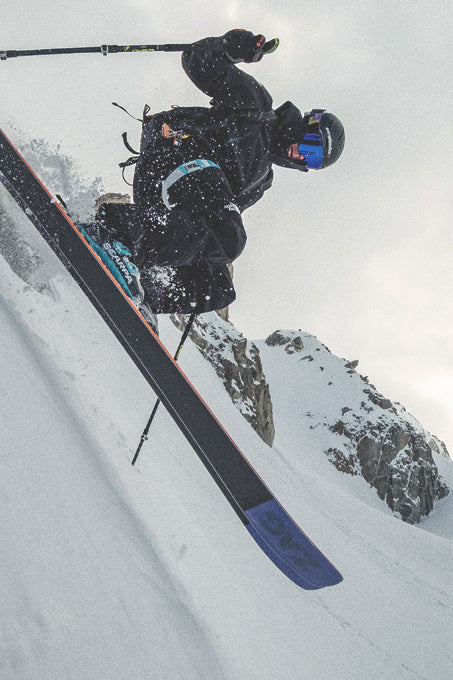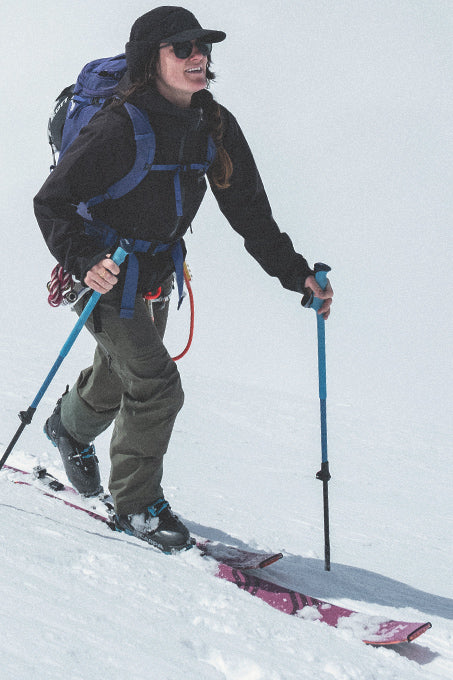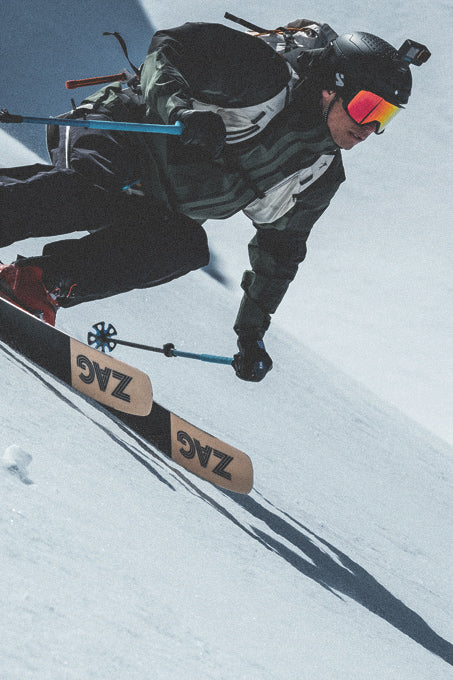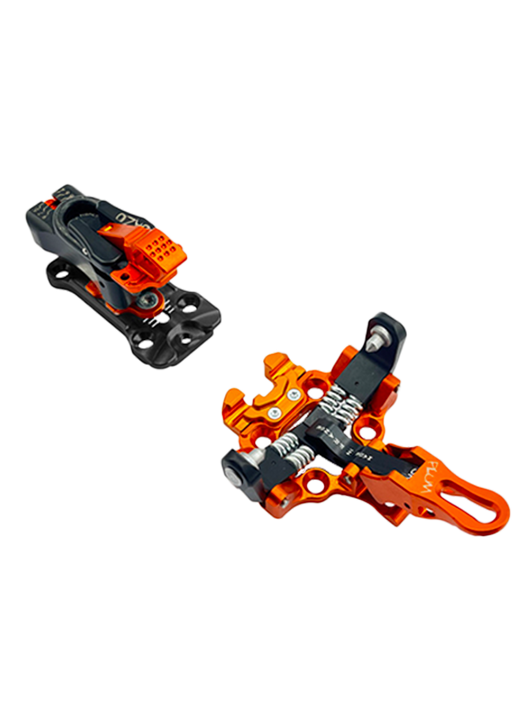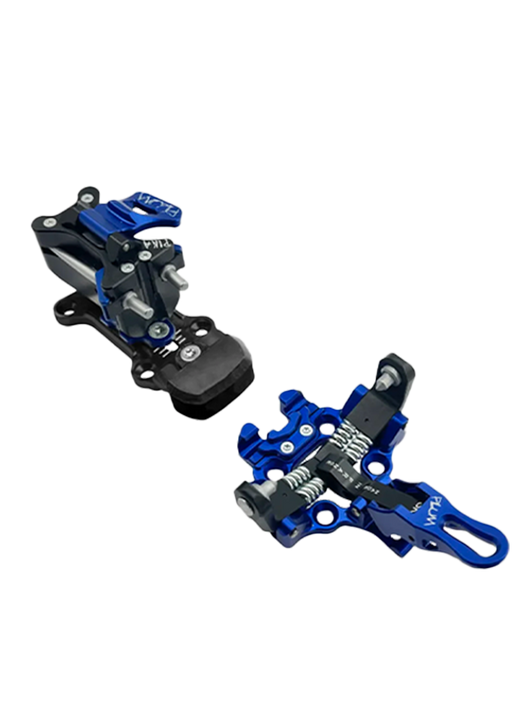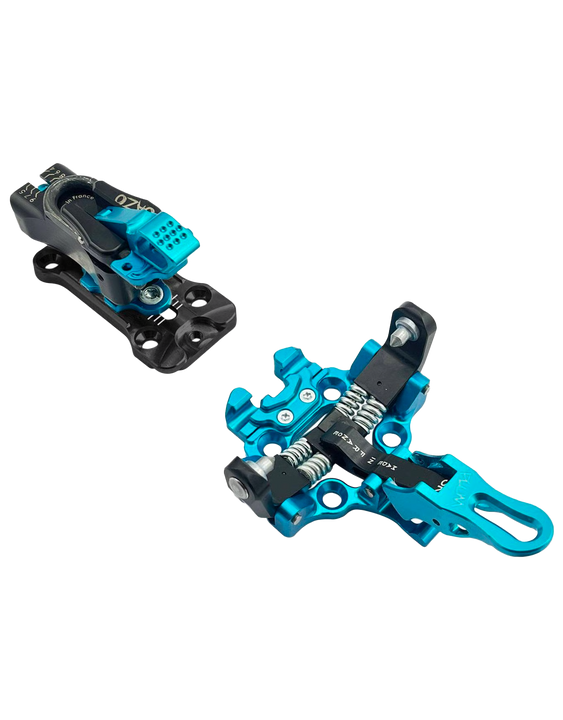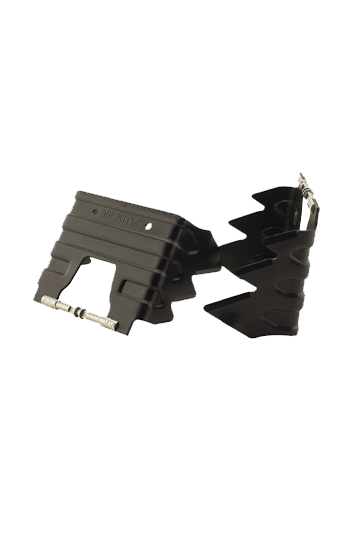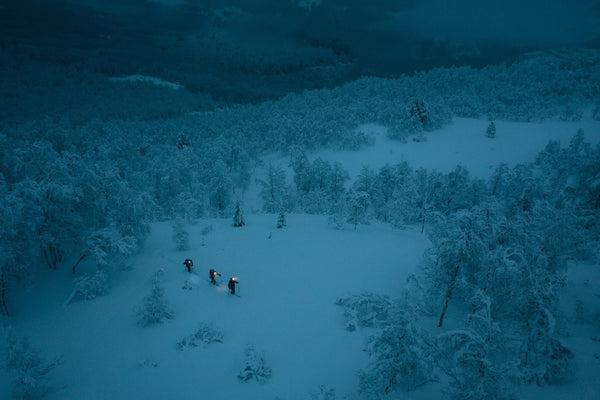Tuto: Preventing risk when skiing off-piste
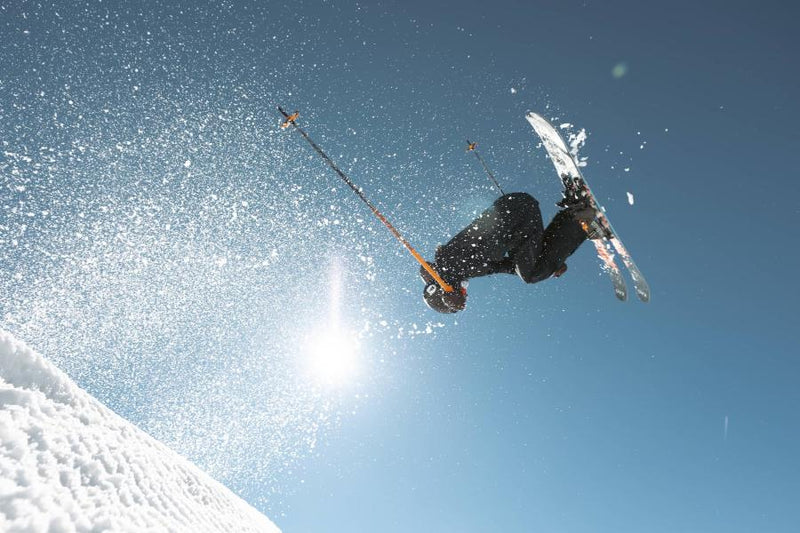
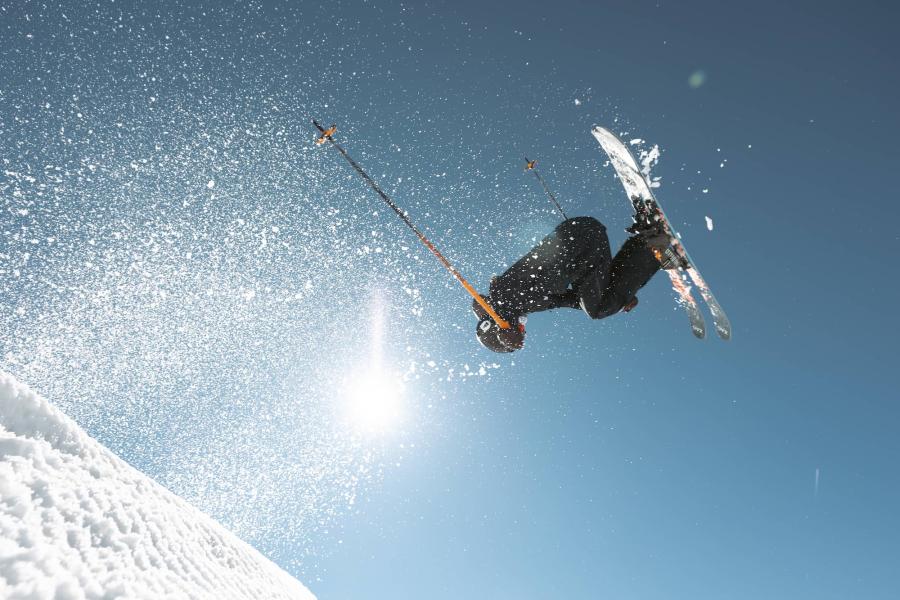
The sport of choice for lovers of the mountains and wide open spaces, freeride and Touring skiing have become commonplace in the ski community. Being able to escape for a while from all the constraints demanded by ski resorts, but also from everyday life, these practices are excellent antidepressants!
On the lookout for the ideal conditions to go out with friends in freshly fallen snow is a Grail dreamed of by all! But as you know, there are many risks involved. So, in this article, we're going to try and help you prevent the risks and adapt in the event of a mishap!
With these conditions in place, you're in the starting blocks in the early hours of the morning with your friends, ready for battle. But not so fast! Nothing beats a little personal weather forecasting. It's important not to overlook the team's state of mind. Knowing everyone's motivations will enable us to adapt the outing to suit as many people as possible. You can never rule out someone who's less fit, or someone who wants to eat up as much elevation gain as possible in as little time as possible, so it's important to be aware of this to avoid frustration within the team.
Check DVA ok but watch out for interference!
For your DVA to work properly, it's essential to eliminate as much interference as possible. Interference can be caused by any electronic device (even switched off/airplane mode for smartphones). The closer the device is to the DVA, the more it interferes with the DVA's waves. Electronic/metal devices should be kept at least 50cm away from the device.
Now it's off, and as the horses are launched, it's easy to see who's got the most and who's got the least, chatting away. I don't need to remind you that when you make a physical effort, you sweat and you get hot. Good diaper management is important. After a quarter of an hour's effort, don't hesitate to take a break, reunite the group and ask everyone how they're feeling (personal weather report part 2), remove a layer if necessary, create new groups if you need to, and get on with it!
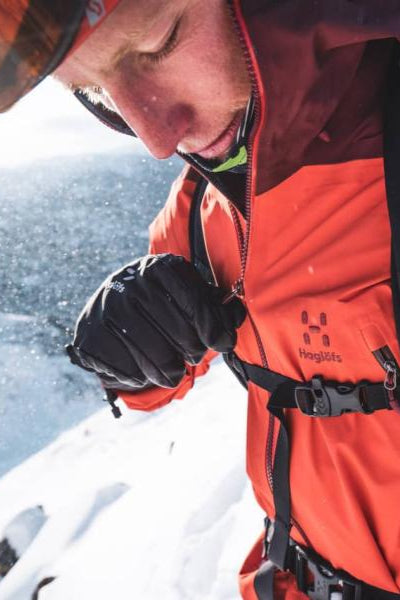
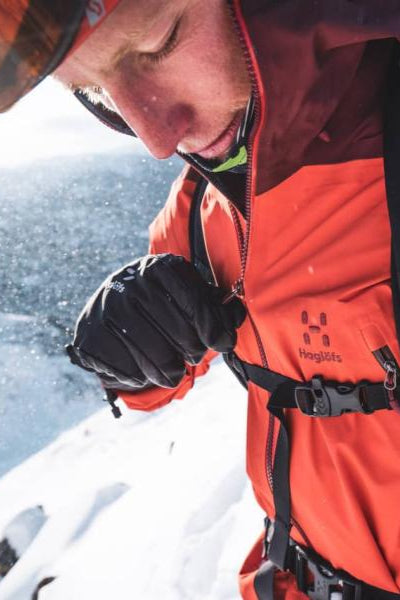
Pierro's words
"If you don't like a decision or a passage, don't hesitate to say so. Communication is a key element in any group outing. Accidents often happen when weaker people don't necessarily want to say that they're not doing well or don't feel it, and on the other hand, a crazy dog can lead you to find yourself in critical situations without having taken the time to analyze the terrain and the environment".
"The double check should be carried out to ensure that all avalanche transceivers are in good working order. It is possible that the frequencies of some avalanche transceivers have drifted and that these devices are no longer compatible with the others.
In general, I put my avalanche transceiver in a secure pocket in my pants (Leach system for attaching it to the inside) and my telephone in the opposite pocket in my jacket or even at the top of my rucksack. It's not only electronic devices that can interfere with the waves, but also the packaging on fruit compotes and cereal bars, which can make your avalanche transceiver malfunction!
DECISION SUPPORT, THE 3X3 FROM MUNTER
This simple method lets you make decisions quickly.
It is based on three factors: people, conditions and terrain, at three spatio-temporal levels: before, in the parking lot and on the ground.
- BEFORE: Consult the Avalanche Risk Bulletin and find out which route to take.
- PARKING : Personal weather forecast. Do a quick briefing with the people you're setting off with on their state of mind, motivation and expectations of the outing.
- TERRAIN: Constantly analyze the terrain and revise your itinerary if conditions turn out not to be as expected.
For further information:
Know the snow conditions on the faces, find out who has been there recently (consult the forums), know the weather conditions to come, the starting point, the route to take (blue lines on IGN maps).
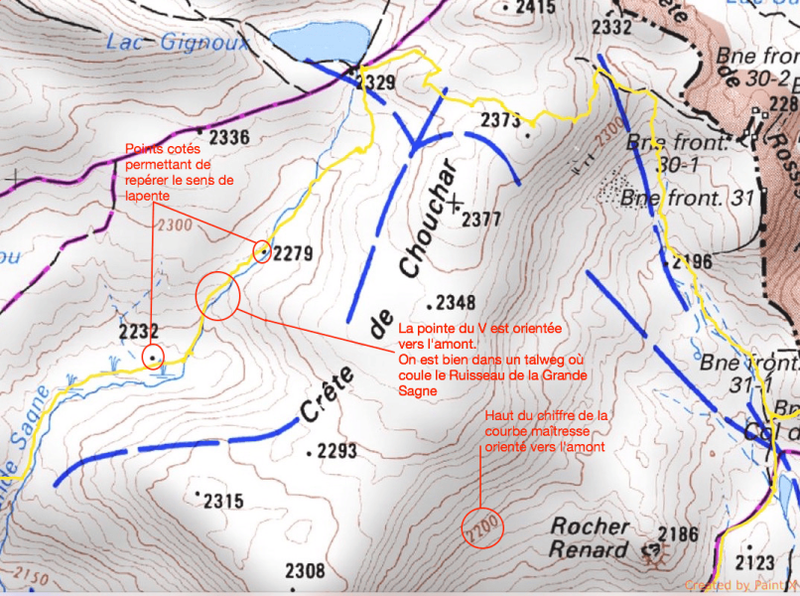
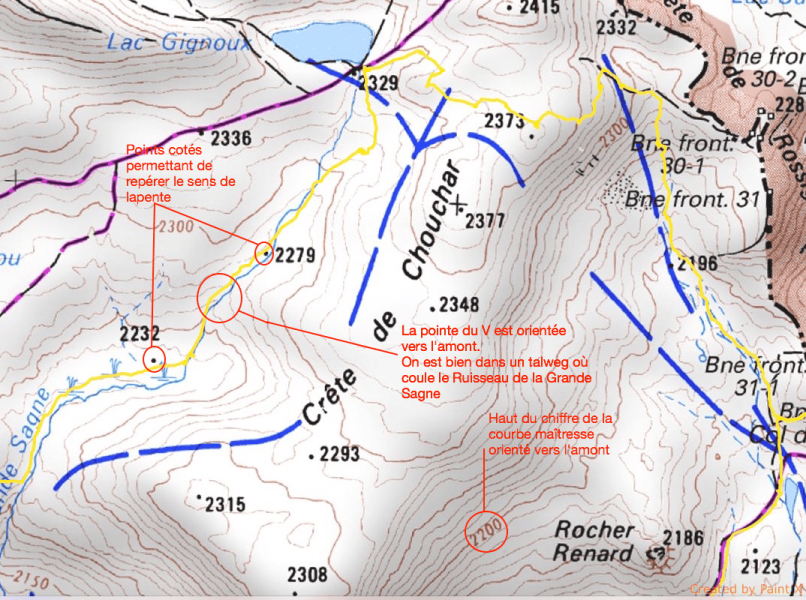
Pierro - "The 3x3 method is one of the risk analysis methods I use regularly on my Touring ski outings, either on my own or with my clients. It's very important to be able to ask the right questions at the right time!
The most complicated thing to analyze and interpret is snow conditions! If you'd like to improve your skills and test your knowledge of snow conditions, don't hesitate to ask for advice from a mountain pro on one or more outings.
A LITTLE BREAK, A LITTLE NIVO POINT!
In winter, and especially when Touring, avalanches are a skier's number one enemy.
What is an avalanche? It's the overlapping of two layers of snow, or "slabs", of different densities. An avalanche is triggered when the lower layer (slab) has a lower density than the upper layer (slab).
The passage of a skier is enough to trigger a slab several tens of metres long and several thousand cubic metres in size.
To get a local feel for the snowpack and its layers, simply invert your Pole and stick it into the snow. You'll quickly feel different densities as you push.
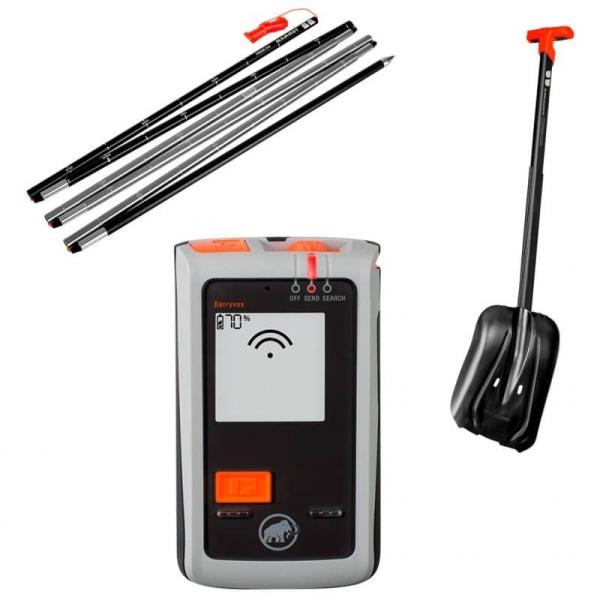
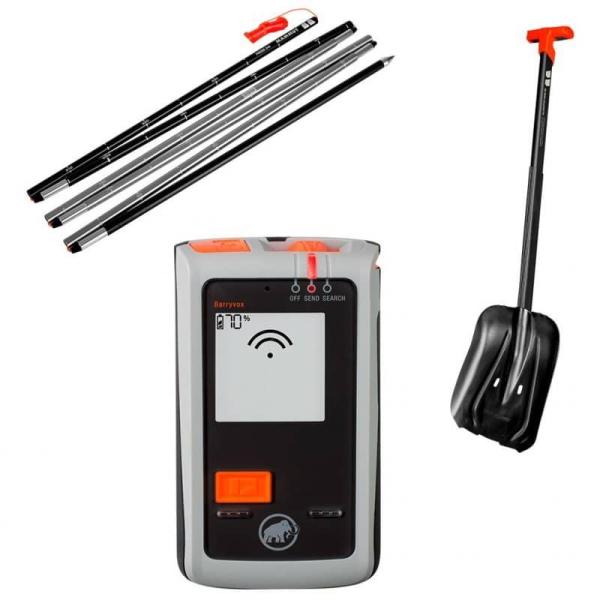
SAFETY IS A PRIORITY!
When skiing outside a ski area, you are subject to the good will of Mother Mountain. It's important to choose and plan your itinerary according to the conditions (rely on the local BRA). However, it is essential to have a safety pack with you. A safety pack is a probe, a transceiver and a telescopic shovel.
Several brands offer these packs at different prices. This will depend on the power of the avalanche transceiver's antennae, the rigidity of the probe and the type of shovel bucket (metal or plastic).
Adding an airbag to your checklist can therefore also be an asset.
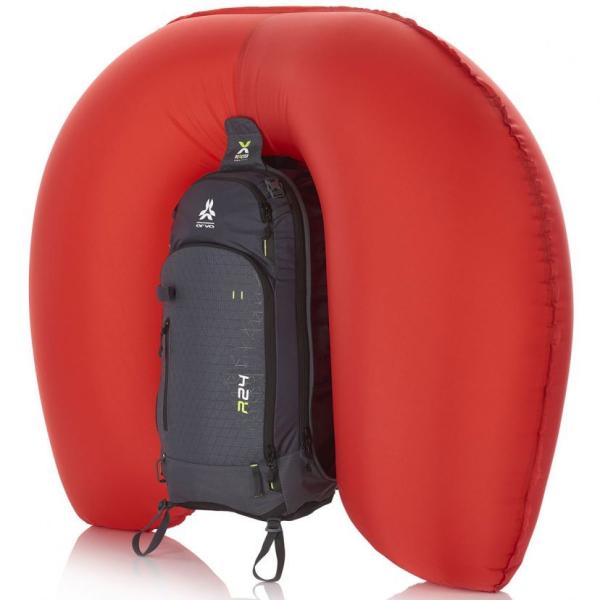
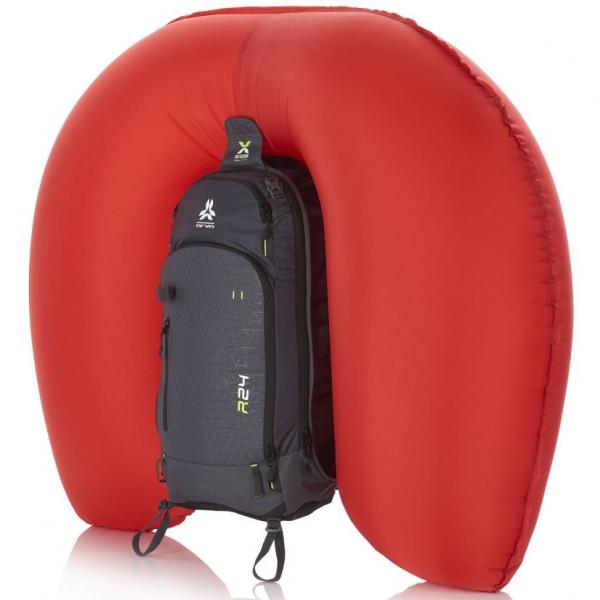
AN AIRBAG, BUT WHAT IS IT?
Quite simply, it's a bag that increases your body volume by inflating. This is achieved by means of a CO2 cartridge which, once hit by the handle, inflates the lateral sides of your backpack, allowing you to stay on the surface of the avalanche, giving you better lift.
This equipment is complementary to the Secu pack.
THE FINAL CHECKLIST
- The right gestures to adopt
- DVA check at the start of the outing
- Check for each group member that the transmit and receive modes are working. To find out how to do this, please refer to our blog Tuto intermédiaire - confirmé, Check DVA
- Replacement skins
- Helicopter signs
- Have a pair of Crampons
- Do not go out alone and tell family or friends about the planned outing.
- In the event of an emergency, find GPS coordinates quickly on your smartphone
- Have a basic rucksack (blanket, survival blanket, food, hot drink, headlamp, first-aid kit, strap).
And that's it! We've come to the end of this blog!
Thank you for your attention, we hope you've learned or refreshed some concepts.
If you have any further questions, please don't hesitate to contact us or come and visit us at the Shop!
RIDE SAFE!
